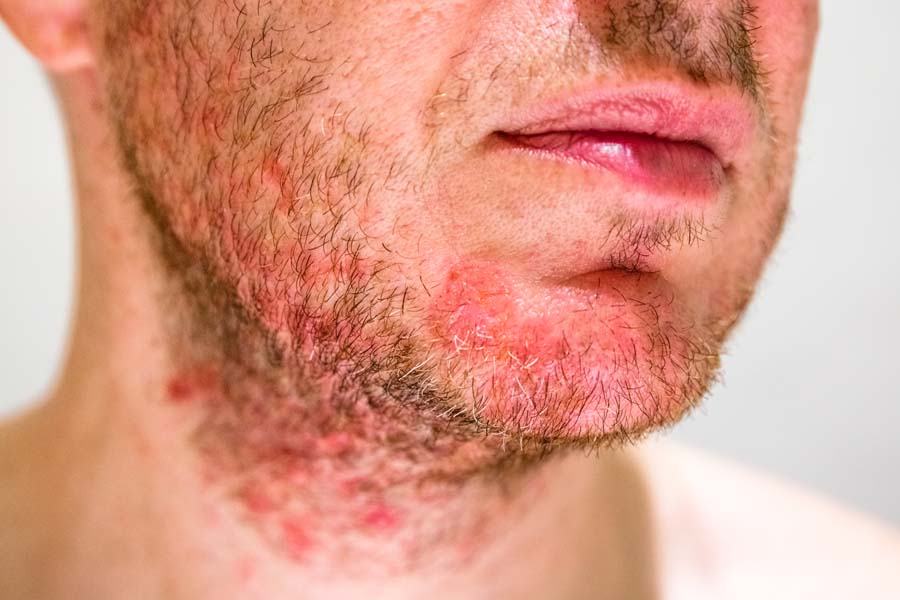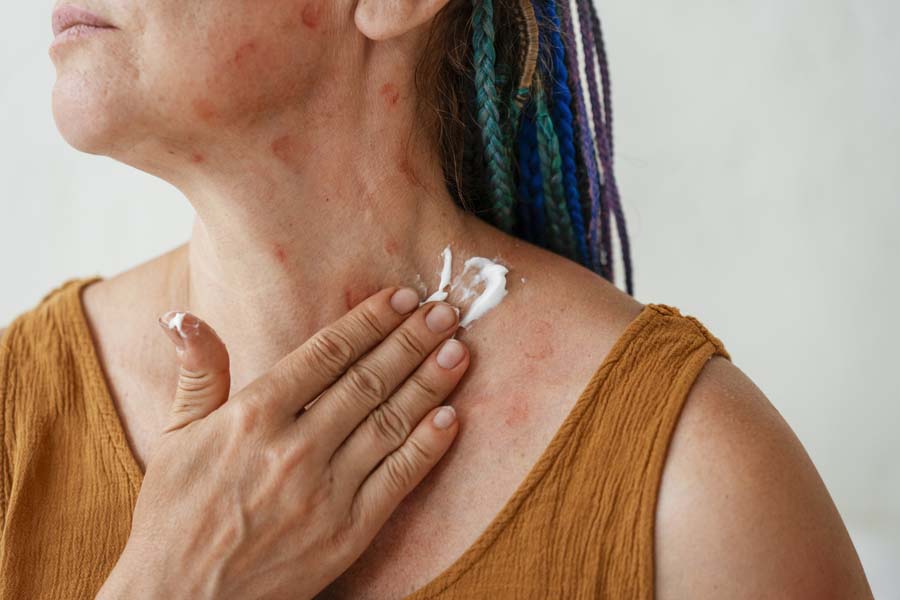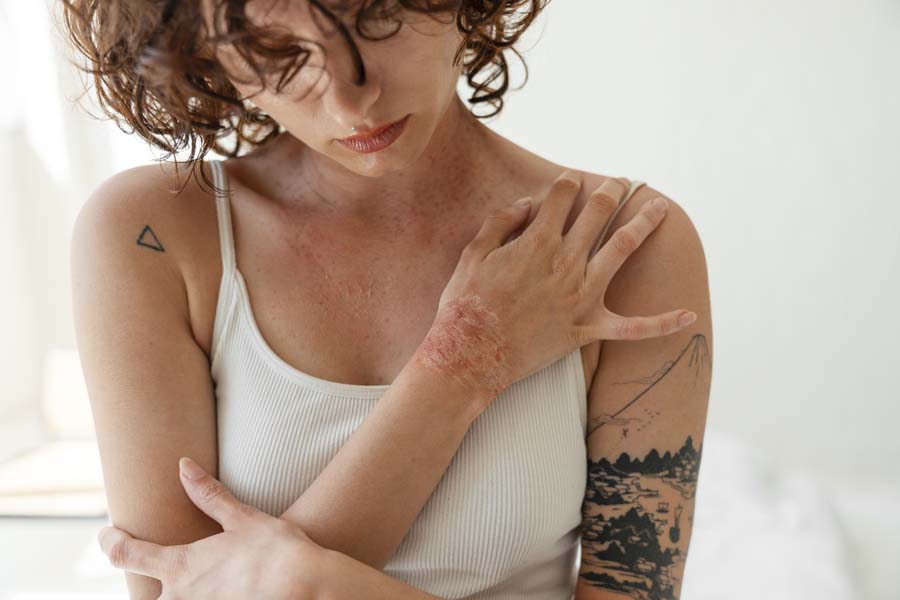About 6% of the American population aged 12 years and older have tried methamphetamine. This highly addicted stimulant is a schedule II drug, meaning it has a high potential for abuse.
Meth gives way to feelings of euphoria, increased energy, and heightened levels of concentration. While, out of context, that might sound great, many individuals seek this feeling again and again—leading to addiction. And this can wreak havoc on one’s entire life, including an individual’s physical health, career, and relationships.
For loved ones, addiction can be an emotional rollercoaster. It can sever tight bonds and leave you in a state of constant anxiety, worry, and stress. However, developing a deeper understanding of meth addiction and its implications can help you learn to navigate it and potentially help your loved one who is suffering. In advanced cases of addiction, meth sores and poverty become more prominent problems. So, what are meth sores?
Meth sores are one of the tell-tale signs of regular meth use. These open sores may appear on the chest, arms, hands, and, most commonly, the mouth. In this article, we explore why these occur, how to recognize them, and how to treat them.
Causes of Meth Sores
Regular meth use gives way to various skin problems. Often, these skin problems may first be attributed to acne, as they appear to resemble this skin condition and frequently appear on the face first.
But poor hygiene and scratching of the sores can lead to further problems, like infections and bigger wounds. So, why do these sores appear in the first place?
There are a few factors that play a role here, including:
- Poor Hygiene: A lack of routine bathing and care can lead to unclean and clogged pores, causing skin irritation and spots.
- Malnutrition: Addiction is a terrible disease that becomes all-consuming. And this usually means neglecting a proper diet or self-care. As a result, certain nutrient deficiencies can develop, impacting skin health and overall physical health.
- “Meth Mites” or “Crank Bugs”: Meth use can lead to hallucinations, including meth mites. For the user, this might feel like bugs are crawling under their skin, leading them to scratch the areas and cause sores.
- Immune System Suppression: Meth addiction suppresses the immune system, meaning the body has a harder time healing and fighting off infections (including those impacting the skin).
- Restricted Blood Flow: The skin can become dry and itchy due to a lack of blood flow, resulting in scratching and itching, and the development of meth sores.
- Burns: Smoking this substance can burn the area around the mouth, leading to mouth or lip blisters and sores.
- Sweat: Meth is a water-soluble drug, meaning our body may dispose of it via our sweat. Unfortunately, sweat that contains meth can lead to skin damage, irritation, and sores. And surprisingly, sweat-containing meth can occur up to two hours to weeks after use.
Symptoms and Appearance

These sores, which often look like small bites at first, become worse due to the above factors. With continuous itching and picking, these small spots can eventually become bigger red, swollen, and open wounds susceptible to infection.
As mentioned earlier, the most common location for meth sores is around the mouth or on the face. Yet, they are also frequently found on the chest, arms, and hands.
Health Risks and Complications
The biggest health risk of meth sores is the potential for infections. These infections can quickly become life-threatening, especially when the individual doesn’t seek out the medical attention they need due to the pull of addiction.
Other, less-severe risks of these sores further include long-term skin damage and scarring.
Routine meth use, overall, is associated with various long-term risks, including:
- Sleeping problems
- Increased risk of diseases (including HIV, Hepatitis B, and Hepatitis C)
- Anxiety and depression
- Violent behavior
- Hallucinations and confusion
- Dental infections or issues
- Significant weight loss
- High blood pressure
- Heart or blood vessel damage
- Lung, liver, and kidney damage
- Changes in brain structure and function
In particular, the changes that occur in the brain can lead to greater cognitive problems, even post-recovery. For instance, an individual who previously used meth may struggle with memory, learning, and coordination issues.
Recognizing Meth Sores

For loved ones, it can be difficult to detect whether sores are caused by a meth addiction or other skin issues. This is especially true due to the early signs resembling other skin problems, like acne.
However, as the addiction progresses, these sores become more prominent. These sores may cover large areas of the body and also become noticeably infected. And this is why at the first sign of a meth addiction, early intervention is key.
With that in mind, beyond meth sores, here are signs to look for that your loved one may be using meth:
- Tweaking: This occurs at the end of a meth binge (This addiction frequently follows binge, then withdrawal patterns). Tweaking may involve hallucinations, feelings of bugs crawling under the skin, intense cravings for meth, irrational behavior, and the inability to sleep.
- Paranoia: A person with a meth addiction may become increasingly erratic. This can lead to paranoid and compulsive behaviors due to the belief that someone is watching them or trying to catch them.
- Extreme Weight Loss: Meth acts as an appetite suppressant, making extreme weight loss very apparent early on.
- Lack of Sleep: Not sleeping is a key sign of a meth addiction. Because of its stimulating effects, regular users may not sleep for days on end.
- Dilated Pupils: Under the influence of meth, the pupils become dilated, which may be noticeable to those that know them best.
Treatment and Prevention
While short-term treatment for meth sores may include prescribed antibiotics or drainage of infected sores, the root of the problem must be addressed. This involves helping your loved one get the support they need for addressing their addiction. Most often, an in-patient rehabilitation program is necessary.
At the same time, strategies that can help prevent skin issues caused by meth sores and promote better skin health can include:
- Keeping the cuts clean.
- Wearing gloves to prevent scratching.
- Encouraging proper hygiene habits, like showering and moisturizing.
- Covering open wounds to prevent germs or infection.
Conclusion
Meth sores are one of the most common physical signs of a meth addiction. On top of these sores, an individual may exhibit a hollow, sunken appearance due to weight loss, premature aging, and dry skin.
Addressing the short-term problem of meth sores and the long-term problem of addiction is essential for avoiding life-threatening issues. Knowing the signs and causes of meth sores can be the first step toward helping someone you care about and raising awareness regarding addiction. If you or someone you know is struggling with addiction, seek out professional help as soon as possible.



